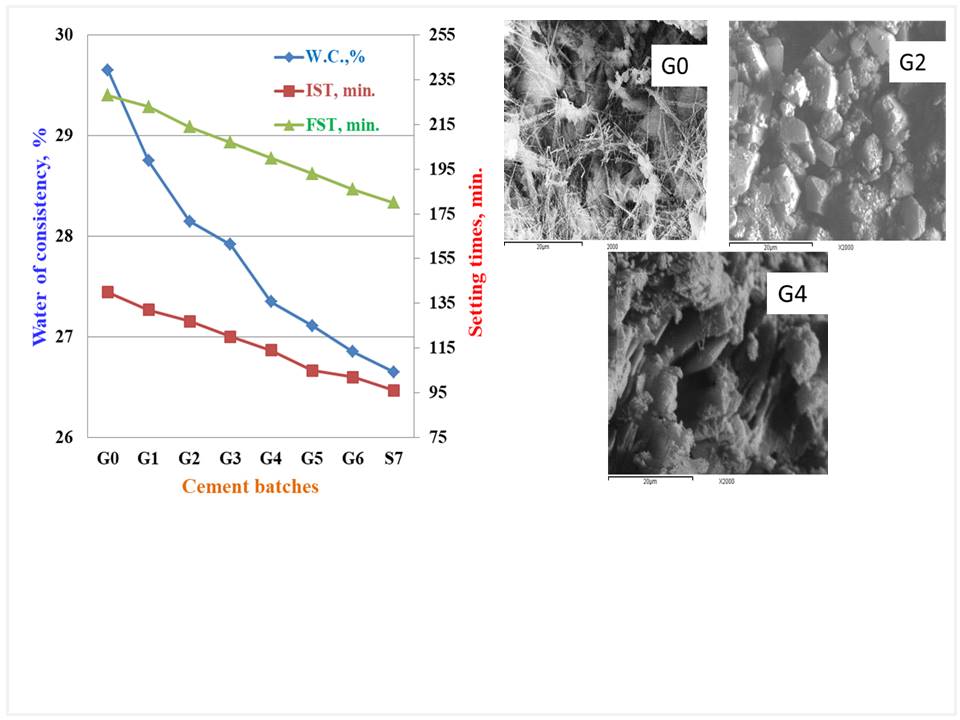Title
Nano - Glass Waste Substitution for Portland cement Pastes
Authors
H. H. M. Darweesh
Refractories, Ceramics and Building Materials Department, National Research Centre, Cairo, Egypt.
*Corresponding author E-mail address: hassandarweesh2000@yahoo.com (H. H. M. Darweesh)
Article History
Publication details: Received: 29th July 2021; Revised: 27th October 2021; Accepted: 27th October 2021; Published: 17th November 2021
Cite this article
Darweesh H. H. M. Nano - Glass Waste Substitution for Portland cement Pastes. Nano Prog., 2021, 3(6), 51-59.

Abstract
The effect of glass waste (GW) substitution on physical, chemical and mechanical properties of Portland cement pastes (OPC) was investigated. The results generally showed that as the GW content increased in the cement batch, the fineness of the whole cement batches increased too. All cement characteristics improved and enhanced as the hydration time proceeded up to 90 days. The water of consistency and setting times (initial and final) decreased with GW content due to the presence of sodium lignosulphonate superplasticizer, which accelerated the setting of cement pastes. The heat of hydration, combined water, bulk density and compressive strength were improved and enhanced with the increase of GW content only up to 12 wt% (G4), whereas the free lime and apparent porosity decreased. With > 12 wt% GW (G5-G7), the heat of hydration, combined water, bulk density and compressive strength were shortened and decreased at all hydration stages, while the free lime and apparent porosity increased. The optimum content of GW was 12 wt%, which achieved the best results, and that containing 21 wt% GW exhibited the lowest, but still higher than those of the blank at all hydration ages. The SEM microscopy showed the formation of ettringite phase (C3A. 3CaSO4. 32 H2O), sheets and blocks of CSH in G0, G2 and G4, respectively.
Keywords
Cement; Glass waste; setting times; heat of hydration; free lime; density; porosity; strength; SEM